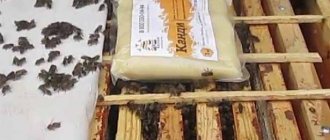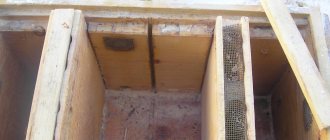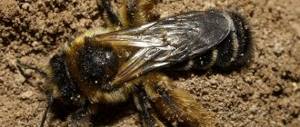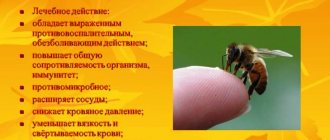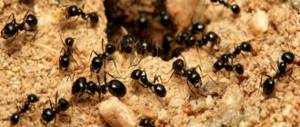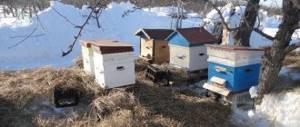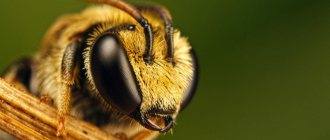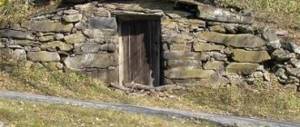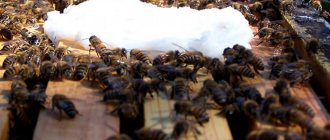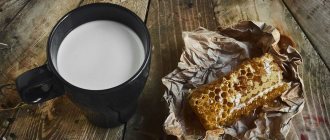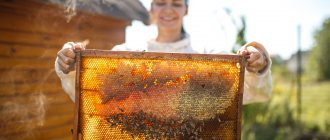Blog articles Beekeeping
Beekeeping
Economics of beekeeping
Beekeeping news in Russia
Beekeeping news in the world
Honey
Propolis
Bee bread
Zabrus
Royal jelly
In the world about bees
Apiary
Bees
News from honey fairs
From the history of beekeeping
- What is Kandy?
- What are the benefits of kandi for bees?
- Cooking recipe
- Recipe "Classic"
- Sugar fudge recipe
- Kandy with flour
- Honey and milk powder
- What can you add to kandi?
- Feeding
- When is feeding needed?
- How to store a supply of Kandi for bees
What are the benefits of kandi for bees?
Most professional beekeepers choose a sugar-based composition for wintering bees. Along with beneficial substances, honey may also contain some types of pathogenic bacteria that can cause a deadly epidemic in the bee family. Attention! For preparation, you need only high-quality products: fresh honey from the last extraction and sweet confectionery powder without starch additives.
A sugar base is preferable to a honey base for the following reasons:
- bee colonies survive the winter period more successfully;
- individuals weakened during the winter quickly acquire an active form;
- shelf life is longer;
- promotes good digestion of bees, easier to digest than honey kandi;
- the composition is more economically beneficial.
The sweet, rich product acts in two ways: it is a good food, and a wonderful means of treatment, since it is most convenient to add it to candy for the prevention of diseases. The product can be bought, but it is better to prepare it at home, using proven ingredients.
What is Kandy?
Beekeeping is a labor-intensive activity that requires thorough knowledge of the methods and conditions of keeping bees, and the peculiarities of their breeding. To get large yields of a unique product, you need to take care of the health of every bee in the hive. The cold season forces the bee family to spend several months in shelter - the honey collection period ends, and the time of rest and peace begins.
This forced reclusion dictates the need for artificial feeding to help the bees survive, keep them alive and healthy until the next season. A dough-like substance, kandi, containing the necessary nutrients, will help feed the striped workers. The basis is the simplest composition: honey/invert sugar or powdered sugar. The binding components are milk powder, acetic acid, pollen, and flour. Proportions are according to the recipe.
Cooking recipe
The base is prepared according to various recipes, choosing the most suitable one through numerous trials and possible errors. The honey base is thoroughly mixed for a long time before adding the ingredients. Sugar requires long-term boiling and simmering. Honey must be fresh, from the latest harvest. Powdered sugar must have a uniform consistency, without lumps or starch additives.
Step-by-step recipe for making kandi for bees
Note ! The cooking process can be labor-intensive due to the large volumes of ingredients, and therefore it is advisable to use cutlery to mix the ingredients. Let's get acquainted with the traditional cooking recipe.
What will you need?
The basis of feeding will be flour - it must be sifted to obtain a pure product. You also need to prepare the sugar, that is, turn it into powder and sift through a sieve. And this must be done without fail!
Melted honey
Honey should only be fresh, not crystallized. If this is not available, run the existing honey through a water bath until it becomes soft. The formation of the mass occurs when water is added, this allows you to adjust the consistency - hard, sticky or soft.
Master Class. Preparations of traditional Kandi
Step 1 . Take a container or vessel and pour flour into it through a sieve. Also heat the honey and stir it in a separate bowl.
Step 2 . Next, pour the heated honey into a container with sifted flour.
Note ! Did you know that if you prepare fertilizer in the fall, it will last until spring?
Step 3 . Add powdered sugar to all ingredients.
Step 4 . Mix the ingredients thoroughly until the looseness of the flour disappears and a viscous mass forms.
Step 5 . Form dense lumps weighing about 1 kg from the resulting mass.
Video - Kandi for bees: proportions and preparation
"Classic"
The recipe for kandi for bees is simple, the product is prepared quickly:
- Heat the honey base until it turns into a homogeneous mass so that lumps and crystals dissolve, but not higher than 60C.
- Cool the resulting hot mixture to 36-38C.
- Slowly add powdered sugar. When the base is sufficiently saturated with powder, it will no longer absorb the sweet sprinkles.
- Stir until smooth.
- Place on a board and knead like regular dough for about 0.5 hours.
- As soon as the batch loses its stickiness and becomes lumpy and hard to the touch, the product is ready.
How to make kandi for bees at home
Preparing sugar-honey top dressing is not a complicated procedure. It can be done at home. Let's say more - if you decide to buy Kandy, then in my opinion, this is a step of desperation. Or the result of a catastrophic lack of time (the reasons may be quite valid).
What you need for cooking
You only need a minimum of 2 ingredients: honey and powdered sugar. Kandi recipes such as Komarov’s nutrient mass and Scholz’s feed mass use the proportions of sugar and honey - 2.5:1. The difference between them is only in the heating temperature: 40° in the first case and 60° in the second. For an even thicker composition, use proportions of 1:3 or 1:4 if there is a risk of the cake liquefying (warm winter, high temperature in the winter hut). The finished cakes crumple well, do not stick to your hands, but leave a small film on your fingers.
Step-by-step preparation
To prepare such feeding for one bee colony for 1 month:
- Take 250 g of honey (preferably natural, light honey - it almost does not crystallize).
- Pour into a saucepan or metal cup (non-oxidizing, that is, not aluminum or cast iron; stainless or enameled will do).
- Place in a water bath (in another saucepan with water). You can simply heat the honey on the stove, but the good thing about a water bath is that even if you get lazy and the water boils, the honey will definitely not burn.
- Heat to a temperature of no more than 60o (steam will appear - turn it off immediately!).
- Take 750 g of sugar (selected, not wet, not lumpy, without impurities).
- Grind in a coffee grinder as finely as possible.
- Mix with honey.
- Add a drop of vinegar and a spoonful of water.
- Knead the dough with your hands and form a flat cake 2-3 cm thick.
- Place in a plastic bag.
Dinner is served. Sit down and eat, please!
Sugar fudge
To make fudge, you only need 3 ingredients: honey, powdered sugar, water. Clean water is poured into an enamel pan and heated. Upon reaching 60C, add sweet powder to hot water, boil for 20 minutes, stir thoroughly. The lumps need to be dissolved and the foam removed. The degree of readiness is checked by lowering the spoon first into the hot syrup, then immediately into cold water. A thickened, quickly separating mixture is an indicator of the readiness of the candy. If the composition turns out to be liquid, you need to continue boiling until ready. The finished product is boiled for another 3 minutes with 600 g of honey of unsolid consistency. If the sweet fudge is ready, cool it, stirring with a wooden spoon (a must!), the mass gradually lightens, acquiring the necessary density and viscosity.
Feeding bees outside
Honey in the nest must be monitored throughout the season. A check to ensure there is sufficient quantity is carried out already in January. If the quality of honey is low, you can feed it as early as November. If families spend the winter outside, then for feeding they should be brought into a room with a temperature not lower than 00. In the open air, insects are given food only during a thaw at above-zero temperatures.
Feeding
The feeding time is chosen according to the climate of the region. Experienced beekeepers advise calculating the laying approximately 2 weeks before the first flight, if the weather does not make adjustments. If the climate is warm and the bribe was carried out late, additional feeding will not be necessary.
Beginners and inexperienced beekeepers do not always correctly determine the need to add candy. You need to listen to the sounds from the hive: if a muffled rustling is heard from there near the wall, the food is running out, the bees are moving in search of food. You can carefully shine a flashlight with a red lamp into the hive (ordinary lighting irritates the family, especially if the bees are in a calm state).
When feeding is not needed
This is what bee brood looks like.
The honey bee’s “winter” lifestyle is verified by a thousand-year period of development and evolution. With the onset of frost, insects gather in a club. The time from November to February, under favorable conditions, can be called a “deaf” period. Honey plants hardly move. Feed is consumed in small quantities. During this quiet time, bees do not need care.
The second period begins with the appearance of the brood. Insects are becoming more active. A lot of energy is spent on maintaining the desired temperature in the brood zone and caring for the offspring. Feed consumption increases.
Experienced beekeepers advise not to disturb the colony until early March. There is no need to feed insects if high-quality food is left for the winter in sufficient quantities. If in doubt, you can check and evaluate the reserves.
Premature feeding leads to unpleasant consequences:
- premature family arousal;
- increased darkening of the uterus;
- insect digestive disorder.
Video: Winter feeding of Kandy bees
It is advisable to prepare Kandy right before storing it. The food is served in the following sequence:
- remove the cover;
- raise the insulating layer;
- lift the canvas.
Carefully distribute the sweet dough over the frame and close the bees, performing the same actions, but in reverse order. Another location is at the bottom of the hive, but this requires skill so that the winter hut does not open for a long time and the bees do not freeze. Experienced beekeepers always “treat” only the cooled mass - the warm cake instantly attracts striped eaters, they start eating ahead of time and destroy all the treats long before the end of wintering. This situation is extremely undesirable - experts almost unanimously do not recommend opening hives in winter, especially in unfavorable, harsh winter huts.
When and how to fertilize
Every experienced beekeeper knows when and how to feed. Injuries in spring or winter. But the most important one must happen in early spring. The reproduction and productivity of bees depends on this. This must be done after the bees have made their first flight. The owner carefully examines the hive and the condition of the queen. If everything is fine, you can add candy.
Do not forget that in winter, every bee needs to replenish nutrients. That is why it is necessary to feed in winter, in February. This honey dough is carefully placed on the bottom of the hives or on the top grid. It is advisable that the entire volume be packaged in bags, each containing 300 grams. This norm is calculated per day for each hive. Keep in the refrigerator for a day and distribute among the hives. If the candy is quickly dismantled by the bees, you need to add another portion. The finished dressing or honey dough is stored in the refrigerator.
The deadline for feeding is June. But experienced beekeepers do not recommend delaying feeding. Moreover, preparing kandi is not difficult. It is worth remembering that all products must be clean; it is better to sift sugar, flour, and powdered sugar before cooking. All debris and small particles will simply end up at the bottom of the hive.
In order to increase the digestibility of kandi, beekeepers recommend adding vinegar to the mixture. 0.3 gr. You will need it for a liter of sugar syrup. Feeding should begin one and a half months before active honey collection. Hunger forces bees to leave their hives. Unstable weather conditions often lead to their death.
The structure and value of a wild hive
Timely feeding will preserve the colony, increase their reproduction and strengthen the immunity of each bee. Thanks to timely actions, strong brood appears and honey yield increases.
During the feeding period, do not forget about the benefits of soy flour. This is a rich source of protein, which is beneficial for future brood. Flour can be placed near the hives after the first flight or placed in specialized feeders. The bees independently choose the required amount. The beekeeper can only replenish the container. With such feeding, it is necessary to control the filling of drinking bowls. The death of a family is, first of all, a lack of food. While eating candy or other types of food, the bees actively move, generating heat. This ability allows them to survive the winter calmly.
Timing of fertilizing
We have figured out the process of preparing the fertilizer, all that remains is to understand how to give kandi to the bees? Everything is simple here. The formed cakes, cubes, etc. are simply placed in the hive, being careful not to disturb its inhabitants. When to do this? It all depends on the individual characteristics of the apiary.
Most often, bees need such feeding in the spring. The signal for many beekeepers is the first spring flight - this means that the bees are in search of food. Before feeding, they usually check the hives for diseases and make sure that the queen of the bee colony is healthy.
Some beekeepers claim that buying candy for bees is much easier than preparing it yourself. And in some ways they are right. However, a high-quality product that you can be 100% confident in can only be prepared from high-quality ingredients. Therefore, we recommend preparing kandi yourself.
Video: Feeding wintering bee colonies with honey and kandi
The sugary mass is wrapped in cellophane or mesh, preferably nylon, to protect against ticks or mosquitoes. Holes for access to nutritious sweetness can be made immediately, but insects can do this on their own, especially in thin materials. You cannot use gauze - the fabric is fibrous and quickly spreads. The inhabitants of the hive are frightened by such a covering; they may refuse complementary foods.
Step by step kandi recipe
For this recipe we will need 1 liter of water, 2 kg of sugar, 600 grams of honey, wax, an enamel basin or other container. It is better to choose larger dishes so that the mixture does not splash out when boiling. The procedure takes place in TWO STAGES. At the first of them the syrup base is prepared:
- Pour a liter of water into an enamel bowl and heat it over medium heat. The approximate temperature should be no more than 60 degrees.
- After this, sugar is added to the water. The mixture prepares itself within 20 minutes.
At this stage, the syrup must not be stirred. You just need to carefully remove the foam that appears on the surface. It is advisable that not only the central part of the dish, but also the entire bottom be subjected to heat treatment. Then the mixture will be more uniform.
When the syrup is ready, move on to the next stage. On it we have to use honey to transform the syrup into fudge:
- Do not let the resulting mixture cool.
- Add honey to it without stirring.
- Boil for 2-4 minutes.
If you notice that the consistency is too tight or hard, you need to add a little water to it. Otherwise, the bees will simply refuse such food. The finished kandi is placed in a tin bowl and stirred while cooling. The cooled kandi must be placed in a bowl, the walls of which must first be lubricated with wax. You can cover the top with a piece of paper, which also needs to be lubricated with wax.
Video: Feeding bees honey kandi is the best choice
On a note! Many apiary owners prepare sugary syrup, but it can cause increased fertility and excessive activity of the bee colony. In this case, “demographic” problems will appear and a decrease in the performance of insects during the honey-bearing period. In winter, one family absorbs an average of 8 to 10-12 kg of honey, the amount depends on climatic conditions and the number of bees in the family. In former times, beekeepers left enough food in the hive to last until mid-summer. This advice is especially relevant for areas with harsh weather conditions, but in the last few years the climate has begun to change everywhere, so it is better not to feed in excess.
How to store a supply of Kandi for bees
Ignorance of storage conditions leads to spoilage of the product, and it can also cause severe harm to the bee family. It is best to use fresh preparations, but you can stock up on feeding in advance. In this case, you need to store the dough in the refrigerator, on the bottom shelf. Candi for bees should not be placed in the freezer under any circumstances!
Maintaining an apiary is a very troublesome, but rewarding task. Striped workers value self-care. Taking care of complete, high-quality nutrition for the bee community in a timely manner means ensuring a good harvest of honey and related products. A healthy and well-fed bee brings the beekeeper not only financial profit, but also the most priceless thing in the world - health.
Latest added articles about bees and beekeeping:
Giving Kandy to the Bees
As mentioned earlier, candy feeding can be given to bees during the winter feeding period, as well as in the spring and autumn. Let's take a closer look at how best to SUPPLY THIS FOOD to insects:
- Use of metal mesh. To do this, we need a metal mesh with dimensions of 20x20 cm and cell size of 3x3 mm. The candy is placed on top of the mesh and covered with polyethylene to prevent drying out. This method is convenient, as it allows the bees to take food from below and from the sides absolutely unhindered. In this case, the food does not fall out and does not stain the hive. This “feeder” is installed at the top of the evidence and left for 8-12 days. Usually, bees manage to completely consume food only during this period.
- Using a plastic bag. The bag holds a 1 kg kandi flatbread. Using an awl, holes are made in the bag through which insects will receive food. The bag is placed at the top of the hive, where the bees get their food. You can also replace polyethylene with gauze, rolled in several layers. Working together to distribute this type of food, in 3 hours you can distribute candy to 500-550 bee colonies.
- Using parchment paper. To implement this method, kandi is placed on top of a sheet in which holes with a diameter of 2-3 mm are made using an awl. The rate of food consumption will increase over time, since due to the influence of bees on the leaf, the holes will expand.
The last two methods are not only more effective, but also more economical for the beekeeper. Indeed, in these situations, he does not have to spend additional time packing the candy.
Remember that the most natural and healthy food for bees at any time of the year is NATURAL FOOD. Therefore, give preference to healthy foods of natural origin for feeding insects. Only then will your bee colonies be healthy and be able to produce a sweet harvest in large quantities every year.
Feed quantity
Experienced beekeepers know the approximate portion of food that will be required for a successful winter. It is important to remember that a lack of food can lead to illness and death of bee colonies. If there is enough food, then by spring the bees will be strong and strengthened.
The amount of feed depends on some nuances:
- duration of winter;
- the presence of severe frosts;
- climate and weather conditions of a certain region;
- family size;
- open or closed wintering.
Not only the productivity of the apiary, but also the quality of honey products depends on the quantity and quality of wintering food.
